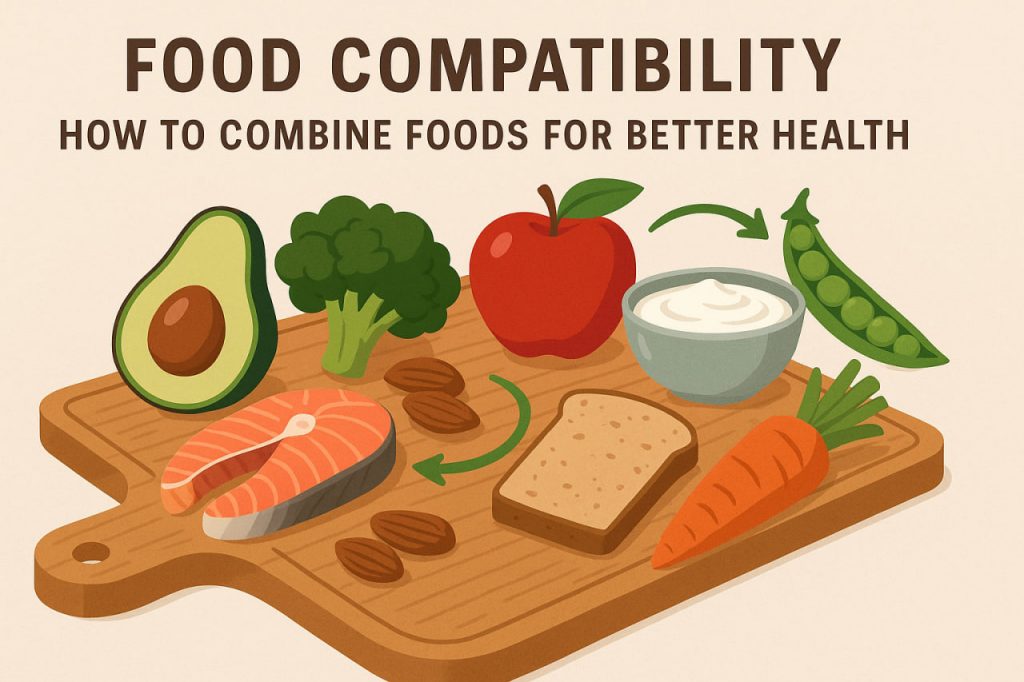The idea of food compatibility refers to how different types of foods are digested and absorbed together. While the human digestive system is adaptable and can handle a wide variety of combinations, certain pairings can improve nutrient absorption and digestion, while others may reduce efficiency or cause discomfort.
Why Food Compatibility Matters
When foods are eaten together, they can interact in ways that influence:
- Nutrient absorption – some vitamins and minerals are absorbed better in combination.
- Digestion speed – heavy meals with poorly matched foods may cause bloating or sluggishness.
- Satiety and energy levels – balanced meals provide longer-lasting energy.
- Overall health – smart combinations support metabolism and prevent deficiencies.
Good Food Combinations
- Iron + Vitamin C – plant-based iron (from beans, spinach, lentils) is absorbed much better when eaten with foods rich in vitamin C (citrus fruits, bell peppers, tomatoes).
- Healthy fats + Fat-soluble vitamins – vitamins A, D, E, and K are better absorbed with fats; for example, salads with olive oil.
- Carbohydrates + Proteins – pairing whole grains with legumes (rice + beans, hummus + pita) creates a complete protein profile.
- Calcium + Vitamin D – dairy or fortified plant milk combined with sun exposure or foods high in vitamin D (mushrooms, fortified cereals).
Food Combinations to Avoid in Excess
- Protein + Protein – combining heavy proteins (like meat and cheese) may slow digestion.
- Fruits + Heavy meals – fruits digest quickly; when eaten with fatty or protein-rich meals, they may cause fermentation and bloating.
- Milk + Citrus – may cause curdling in the stomach for sensitive individuals.
- Refined sugar + Fats – such as pastries and fried sweets, which stress metabolism.
Balanced Plate Principle
Nutritionists recommend the “balanced plate” approach instead of strict separation:
- ½ plate of vegetables and fruits
- ¼ plate of whole grains or complex carbs
- ¼ plate of proteins (legumes, fish, eggs, or lean meat)
- A small portion of healthy fats (nuts, seeds, oils)
Conclusion
Food compatibility is not about strict rules but about making smarter choices. Combining certain foods enhances nutrient absorption, while avoiding heavy, conflicting mixes supports easier digestion. By focusing on variety, balance, and moderation, anyone can enjoy meals that are both healthy and satisfying.
Glossary
- Nutrient absorption – the process by which vitamins and minerals enter the bloodstream from food.
- Fat-soluble vitamins – vitamins A, D, E, and K, which require fat for absorption.
- Fermentation – chemical breakdown of food in the stomach or intestines, causing gas.
- Balanced plate – a nutrition concept dividing the plate into portions for healthy eating.
- Complete protein – a protein source containing all essential amino acids.


